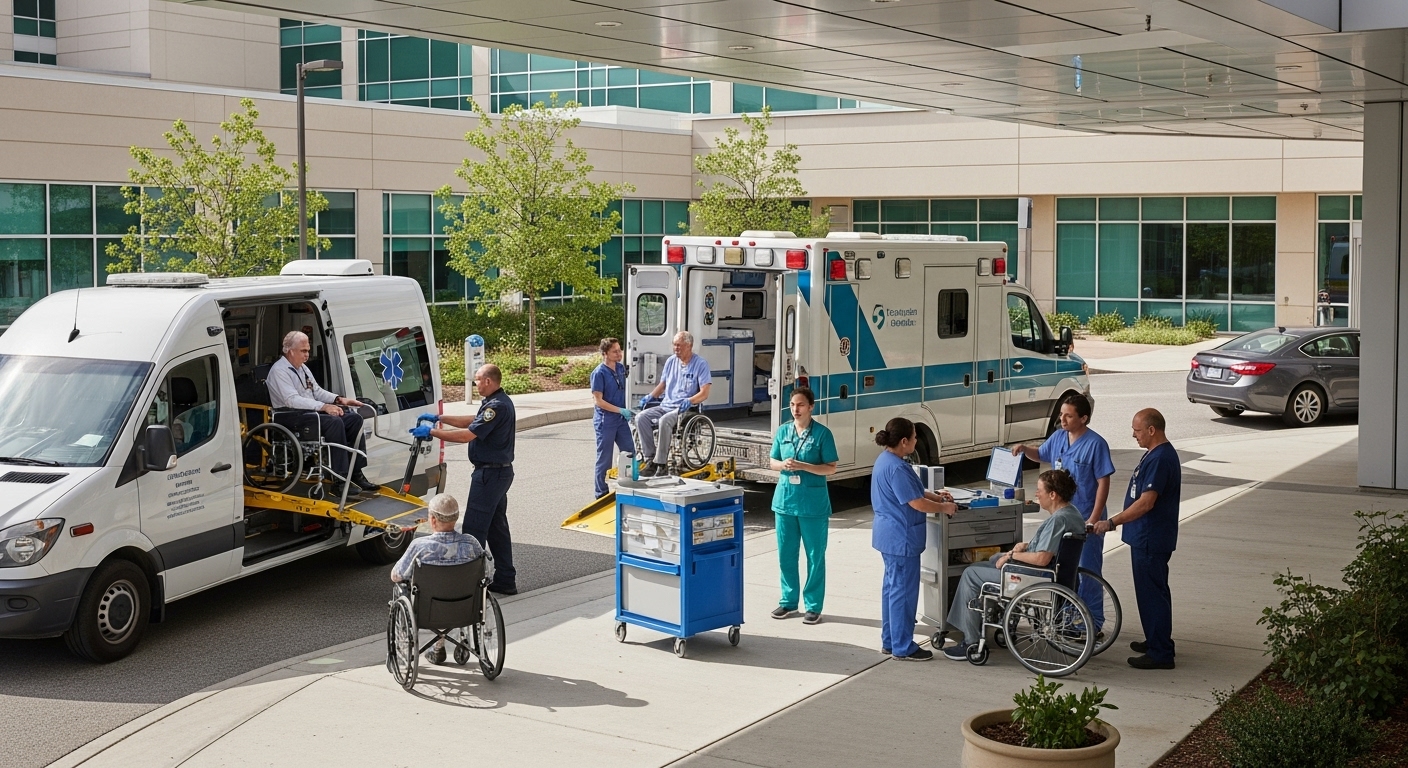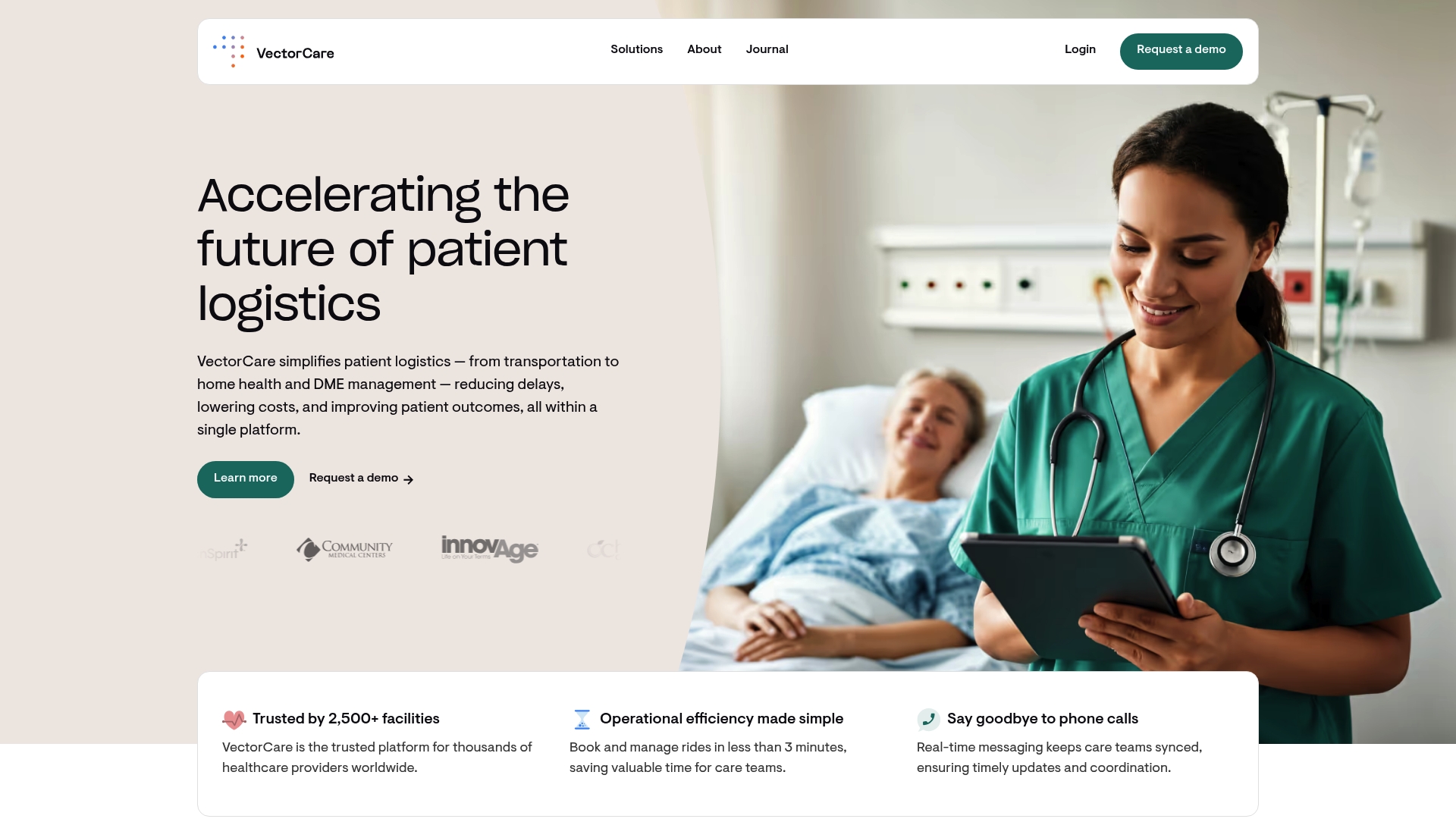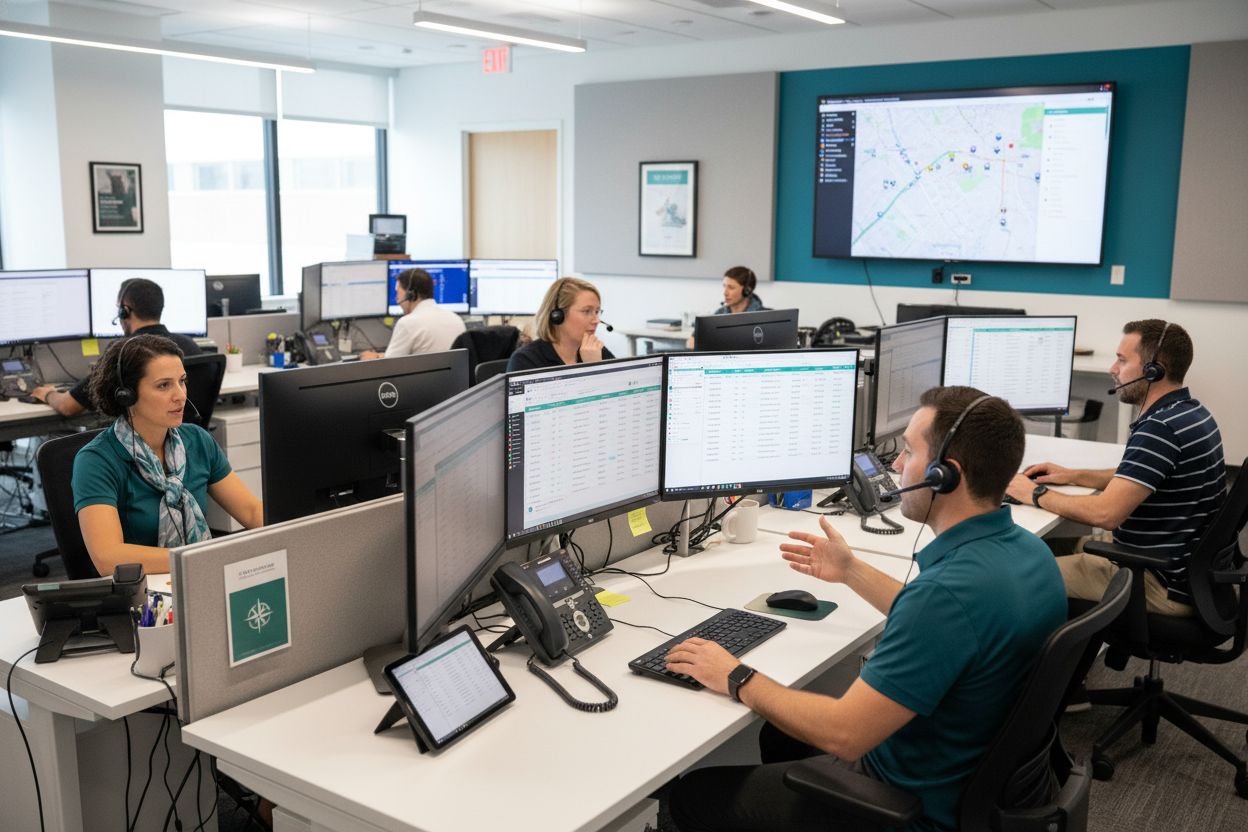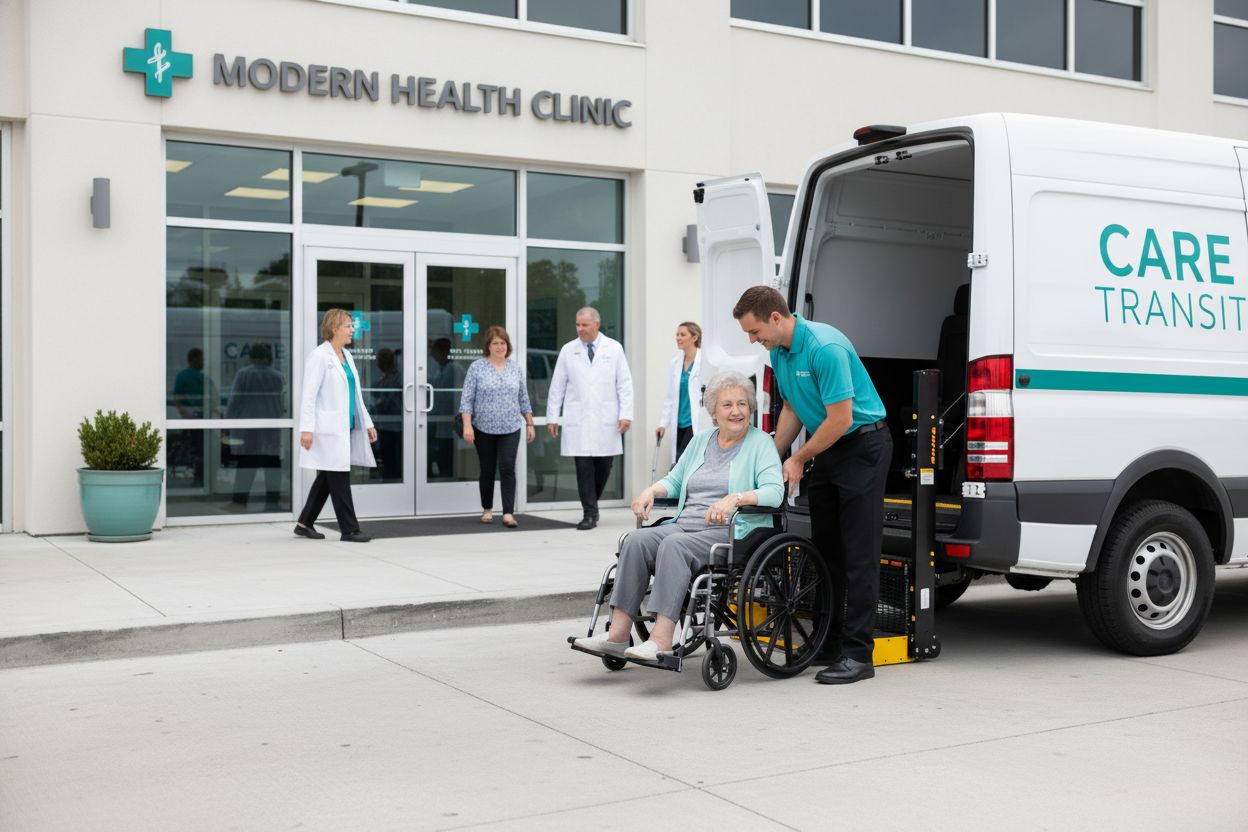7 Key Factors Influencing Non Emergency Medical Transportation Cost

Figuring out non emergency medical transportation costs might sound straightforward. Yet, these fees can swing wildly depending on where you live or how far you need to travel. In fact, specialized vehicles like wheelchair vans can cost 40% to 60% more than standard rides, turning what looks like a simple lift into careful financial planning. Most people assume price hinges on the ride alone, but the real surprises hide in logistics, insurance rules, and the hidden tech powering every trip.
Table of Contents
- Understanding The Basics Of Non Emergency Medical Transportation Cost
- Geographic Location And Its Impact On Costs
- Type Of Vehicle Used And Cost Implications
- Distance Traveled: How It Affects Pricing
- Special Needs And Additional Services: What To Consider
- Insurance Coverage And Reimbursement Processes
- Comparing Rates: Finding The Best Options
Quick Summary
| Takeaway | Explanation |
|---|---|
| Evaluate distance effects on costs | Understand how the distance traveled influences transportation pricing, especially in rural areas where costs increase significantly. |
| Select appropriate vehicle types | Choose vehicles based on patient needs, as specialized options can greatly impact overall service costs. |
| Understand regional cost variations | Assess geographic factors affecting NEMT costs, noting that urban and rural settings present unique financial implications. |
| Prioritize technology for efficiency | Utilize advanced NEMT software for optimization in routing and cost management, ensuring effective transportation solutions. |
| Compare NEMT rates comprehensively | Implement detailed evaluations of transportation provider rates, including base costs and potential additional fees, for informed decision-making. |
1: Understanding the Basics of Non Emergency Medical Transportation Cost
Non Emergency Medical Transportation (NEMT) represents a critical healthcare service designed to help patients who cannot independently travel to medical appointments using personal or public transportation. Understanding the fundamental cost structures of NEMT is essential for healthcare providers, patients, and insurance companies seeking to optimize patient care and manage financial resources effectively.
The primary goal of NEMT is to ensure patients receive timely medical care by providing safe, reliable transportation solutions. Costs for these services vary widely based on multiple interconnected factors. According to research from the Centers for Medicare & Medicaid Services, NEMT expenses are influenced by several key elements:
- Distance traveled between patient pickup location and medical facility
- Type of transportation vehicle required (wheelchair van, sedan, stretcher van)
- Patient mobility requirements
- Geographic region and local transportation infrastructure
Healthcare organizations must carefully evaluate these components to develop cost-effective NEMT strategies. While transportation seems straightforward, the logistics involve complex considerations such as driver qualifications, vehicle maintenance, insurance requirements, and compliance with healthcare regulations.
Additionally, technological advancements are transforming NEMT cost management. Modern platforms enable more efficient routing, real-time tracking, and data-driven optimization. Learn more about how advanced NEMT software can streamline patient transportation and potentially reduce overall operational expenses.
Understanding these foundational aspects helps stakeholders make informed decisions about non emergency medical transportation services, balancing patient needs with financial constraints.
2: Geographic Location and Its Impact on Costs
Geographic location emerges as a critical determinant in non emergency medical transportation (NEMT) cost structures, presenting significant variations across different regions. Urban, suburban, and rural environments each present unique challenges that directly influence transportation expenses and service delivery models.
Rural Areas Cost Dynamics
In rural settings, NEMT costs typically escalate due to several challenging factors:
- Longer travel distances between patient residences and medical facilities
- Limited transportation infrastructure reducing competitive service options
- Higher per-mile transportation expenses
- Fewer available transportation providers
According to research from the National Academies Press, rural regions experience substantially higher transportation costs compared to urban centers. These increased expenses stem from extended travel routes, decreased transportation density, and increased vehicle maintenance requirements across greater distances.
Urban Environment Considerations
Urban areas present a contrasting cost landscape. Dense transportation networks and multiple service providers create more competitive pricing structures. However, urban NEMT services must navigate complex challenges like traffic congestion, parking limitations, and higher operational overhead costs.
Key cost influencers in urban environments include:
- Frequency of transportation requests
- Proximity of medical facilities
- Local transportation regulations
- Labor market wage rates
Regional Regulatory Impact
State and local regulations significantly modify NEMT cost calculations. Different jurisdictions establish unique reimbursement rates, mileage restrictions, and service requirements that directly impact transportation expenses. Learn more about how advanced NEMT software can help manage these complex regional variations.
Understanding these geographic nuances allows healthcare organizations to develop more precise, cost-effective transportation strategies tailored to specific regional contexts.
3: Type of Vehicle Used and Cost Implications
The type of vehicle utilized in non emergency medical transportation (NEMT) significantly impacts overall service costs, creating a complex ecosystem of transportation options with varying financial implications. Vehicle selection represents a critical decision point for healthcare providers and transportation managers seeking to balance patient needs with budgetary constraints.
Vehicle types range from standard sedans to specialized wheelchair-accessible vans, each with distinct cost structures and service capabilities. According to research from the Medicaid and CHIP Payment and Access Commission, these vehicle categories include:
- Sedan/Standard Vehicles: Most economical option for ambulatory patients
- Wheelchair Accessible Vans: Higher cost due to specialized equipment
- Stretcher Vehicles: Most expensive, requiring significant medical adaptation
- Public Transit Options: Lowest per-ride cost but limited patient accessibility
Specialized Vehicle Considerations
Wheelchair accessible vehicles represent a significant cost investment. These transportation modes require additional equipment, specialized driver training, and enhanced maintenance protocols. The modified vehicles typically cost 40% to 60% more than standard transportation options, reflecting the complex infrastructure needed to support patients with mobility challenges.
Furthermore, vehicle selection impacts more than immediate transportation expenses. Factors such as fuel efficiency, maintenance frequency, and driver qualifications contribute to the total cost of ownership. Modern transportation technologies are helping organizations optimize these expenses through advanced routing and vehicle management strategies.
Advanced NEMT software can help organizations navigate these complex vehicle selection challenges, enabling more strategic transportation resource allocation.
Critical cost elements include:
- Initial vehicle purchase or lease expenses
- Ongoing maintenance and repair costs
- Specialized equipment adaptation requirements
- Driver training and certification expenses
- Insurance and compliance expenditures
Healthcare organizations must carefully evaluate these multifaceted considerations to develop cost-effective, patient-centered transportation solutions that balance financial constraints with quality of service.
4: Distance Traveled: How It Affects Pricing
Distance traveled stands as a fundamental determinant in non emergency medical transportation (NEMT) pricing, creating a direct correlation between miles driven and transportation expenses. This critical factor encompasses multiple complex variables that significantly impact overall cost structures for healthcare providers and transportation services.
According to research from the National Academies Press, transportation costs are not simply a linear calculation of miles traveled. Complex pricing mechanisms emerge from multiple interconnected factors:
- Base rate for initial miles
- Incremental charges for additional distance
- Geographic terrain complexity
- Road infrastructure conditions
Rural Transportation Challenges
Rural environments present unique distance-related pricing challenges. Longer travel distances between patient residences and medical facilities inherently drive up transportation costs. These extended routes require more fuel, increased vehicle maintenance, and longer driver hours, all contributing to higher overall expenses.
Key pricing components influenced by distance include:
- Fuel consumption rates
- Vehicle depreciation
- Driver compensation
- Maintenance and wear-and-tear expenses
Technological Optimization
Modern transportation technologies are transforming how distance impacts pricing. Advanced NEMT software can help organizations optimize routing and reduce unnecessary transportation expenses, providing more efficient and cost-effective solutions.
Healthcare organizations must develop sophisticated strategies that account for these nuanced distance-related pricing dynamics. By understanding the intricate relationship between miles traveled and transportation costs, providers can create more predictable and economical non emergency medical transportation services.
5: Special Needs and Additional Services: What to Consider
Non emergency medical transportation (NEMT) becomes exponentially more complex when addressing patients with specialized mobility requirements. These unique situations demand comprehensive transportation solutions that go beyond standard service models, directly impacting overall cost structures.
According to research from the Centers for Medicare & Medicaid Services, special needs transportation involves critical considerations:
- Wheelchair accessibility
- Bariatric patient accommodations
- Stretcher and gurney transportation
- Specialized medical equipment support
- Additional personnel requirements
Cost Implications of Specialized Services
Transportation for patients with complex medical needs typically incurs significantly higher expenses. Specialized vehicles equipped with hydraulic lifts, secure wheelchair restraints, and advanced medical support systems can cost 50% to 80% more than standard transportation options.
Key additional service cost factors include:
- Customized vehicle modifications
- Enhanced driver medical training
- Longer transport preparation times
- Complex scheduling requirements
- Increased insurance and liability expenses
Strategic Considerations
Healthcare organizations must develop nuanced strategies that balance patient care with financial sustainability. This requires understanding the intricate relationship between specialized transportation needs and associated expenses.
Advanced NEMT software can help organizations manage these complex transportation requirements more effectively, offering sophisticated routing and resource allocation capabilities.
Ultimately, successful special needs transportation demands a holistic approach that prioritizes patient safety, comfort, and medical necessity while maintaining fiscal responsibility.
6: Insurance Coverage and Reimbursement Processes
Insurance coverage and reimbursement processes represent a complex landscape that significantly influences non emergency medical transportation (NEMT) costs. These intricate financial mechanisms determine how transportation expenses are allocated, managed, and compensated across different healthcare systems.
According to research from the Medicaid and CHIP Payment and Access Commission, NEMT reimbursement involves multiple critical components:
- Medicaid mandated transportation benefits
- State-specific coverage variations
- Third-party broker models
- Managed care plan considerations
- Fee-for-service reimbursement structures
Reimbursement Complexity
The reimbursement landscape varies dramatically between different insurance providers and government programs. Medicare and Medicaid have distinct guidelines that directly impact transportation cost calculations. Some programs reimburse transportation providers at fixed rates, while others utilize more dynamic pricing models based on distance, vehicle type, and patient needs.
Key reimbursement considerations include:
- Documentation requirements
- Verification of medical necessity
- Compliance with billing regulations
- Patient eligibility criteria
- Approved transportation modes
Technological Integration
Modern healthcare technologies are transforming reimbursement processes. Learn more about how advanced NEMT software can streamline insurance documentation, reducing administrative overhead and improving financial accuracy.
Healthcare organizations must develop sophisticated strategies that navigate these complex insurance landscapes. Understanding the nuanced reimbursement mechanisms is crucial for maintaining financial sustainability while providing essential transportation services to patients with diverse medical needs.
7: Comparing Rates: Finding the Best Options
Comparing non emergency medical transportation (NEMT) rates requires a strategic approach that goes beyond simple price comparison. Healthcare organizations must evaluate multiple dimensions to identify the most cost-effective and reliable transportation solutions for patient needs.
According to research from the U.S. Government Accountability Office, comprehensive rate comparison involves analyzing several critical factors:
- Base transportation rates
- Additional service fees
- Vehicle type pricing
- Geographic service coverage
- Performance reliability metrics
Cost Evaluation Strategies
Transparent rate structures are essential for making informed decisions. Organizations should request detailed pricing breakdowns that include not just base rates, but also potential additional expenses such as waiting times, special accommodations, and cancellation policies.
Key comparison considerations include:
- Provider reputation and track record
- Response time capabilities
- Patient satisfaction ratings
- Compliance with medical transportation regulations
- Technology integration capabilities
Technology-Driven Comparisons
Modern healthcare technologies are revolutionizing how organizations compare and select NEMT providers. Advanced NEMT software can help streamline the rate comparison process, providing real-time insights and comparative analytics.
Successful rate comparison is not just about finding the lowest price, but identifying the most comprehensive and reliable transportation solution. Healthcare organizations must balance cost considerations with service quality, patient safety, and operational efficiency to make optimal transportation decisions.
Below is a comprehensive table summarizing the core factors and insights from the article regarding non emergency medical transportation (NEMT) costs, challenges, and optimization strategies.
| Key Factor | Description | Cost/Benefit Impact |
|---|---|---|
| Geographic Location | Rural areas face higher costs due to long distances and fewer providers; urban areas have more competition but higher overhead. | Directly affects transportation pricing models and service availability in each region. |
| Vehicle Type | Standard sedans are the most affordable; wheelchair/stretcher vans require specialized equipment and training, increasing cost. | Specialized vehicles can cost 40-80% more; choice must align with patient needs and budget. |
| Distance Traveled | Longer distance adds incremental per-mile charges, especially significant in rural or remote locations. | Increases overall price due to fuel, wear, and driver compensation; technology can help optimize routes. |
| Special Needs & Additional Services | Patients requiring wheelchair, bariatric, or stretcher transport need custom accommodations and trained staff. | Adds considerable expense due to vehicle modifications, staff, and insurance requirements. |
| Insurance & Reimbursement | Coverage and payment rules vary by state, Medicaid, Medicare, and managed care, with complex billing and eligibility processes. | Impacts out-of-pocket cost, reimbursement speed, and administrative workload for providers and patients. |
| Rate Comparison & Provider Selection | Thorough cost evaluations consider base fares, added fees, and service reliability using modern comparison tools and platforms. | Enables identification of best-value providers balancing price, quality, safety, and compliance. |
| Technological Solutions | Advanced NEMT software streamlines scheduling, optimizes routes, integrates compliance, and tracks activity in real time. | Can greatly reduce operational expenses, improve transparency, and enhance care delivery efficiency. |
Lower NEMT Costs While Improving Patient Care—See How Digital Logistics Make the Difference
Worried about unpredictable non emergency medical transportation costs and complicated logistics? This article highlights how distance, vehicle types, special needs, and reimbursement headaches can drain your budget and increase frustration for your staff. At VectorCare, we know providers need tools that cut through the hassle, automate complex scheduling, and deliver real-time clarity every step of the way.
Find out how integrated logistics can help you:
- Automate scheduling across multiple vehicle types and service needs
- Track every ride in real time for complete transparency
- Streamline communication and documentation for faster, more accurate reimbursement

Ready to reduce operational costs and deliver better NEMT outcomes right away? Visit VectorCare’s digital platform to see how our all-in-one tools strengthen compliance, speed up care, and help you respond faster to changing patient needs. Take the next step now and move toward efficient, reliable NEMT that supports every care journey.
Frequently Asked Questions
What are the main factors influencing the cost of non-emergency medical transportation (NEMT)?
The primary factors influencing NEMT costs include the distance traveled, type of vehicle used, patient mobility requirements, geographic location, and additional services required for special needs patients.
How does the type of vehicle impact NEMT pricing?
The type of vehicle significantly affects NEMT pricing. Standard sedans are the most economical, while wheelchair-accessible vans and stretcher vehicles incur higher costs due to specialized equipment and modifications needed to accommodate patients with mobility challenges.
Why does geographic location matter for NEMT costs?
Geographic location affects NEMT costs due to variations in travel distances, transportation infrastructure, and local regulations. Rural areas often face higher expenses due to longer travel times and fewer transportation options compared to urban environments.
How can technological advancements reduce NEMT operational costs?
Technological advancements, such as advanced NEMT software, enable organizations to optimize routing, track transportation in real-time, and manage complex scheduling. These improvements can lead to cost savings by reducing unnecessary trips and enhancing resource allocation.



